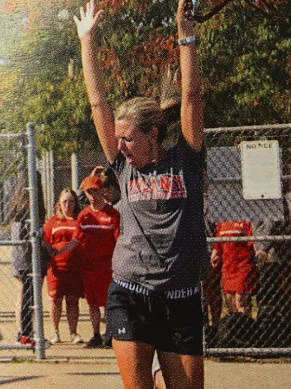Seniors in the magnet programs at North Harford have been accumulating information and forming experiments for their capstone over the last several years.. These scholars have finished their projects and will be presenting them May 15 in the cafeteria for Capstone Night, which is open to anyone in the community.
Mr. Gregory Murrell along with Mrs. Dana Morton and Mrs. Laura O’Leary have been coaching and mentoring students throughout this entire process. When Murrell was in undergrad his research area was fetal bone development. Murrell says, “I wrote a 25 page research paper on this topic and had a mentor just like the students here.”
Capstone is “an independent research project that they get to choose based on their interests.” Murrell says, “when they choose something they are passionate about they then research it from peer review journals. They then create their own project and base it on the methodology that they read about in the prior research.”
Once students do the experiment, they start the writing process. Each person has a mentor which can be someone from industry or a local farm, to help them through this project. Every magnet student who goes to this school is required to do this course every year.
The teacher explains, “once they have everything done and written, they go through multiple drafts until it gets as perfect as it can be. They then put it all on a poster to display for people of the community to see in a gallery walk.”
Senior Rustin Newbold did a project on “evaluating to what extent past and present hurricanes have on populations. As well as changes over time that might fuel or indicate any patterns.”
Newbold says, “I didn’t have a traditional experiment because of the topic I did. I got all of my research from different websites and did geo-spacial analysis in order to estimate storm surge impact or come up with a relation to see the impact on populations.” The students also explained, “I also looked at ocean temperature water data to see if any frequencies made a pattern.” His conclusions were that there are more hurricanes occurring overtime.
He only looked at the Gulf of Mexico to Maine and also concluded the “severity of the storms are also increasing as well as the impacts of them.” Newbold explains, “my mentor was Max Madness who was a former student here, who now works at CCP in engineering but he also has a weather Facebook page. He helped me a lot through the whole process.”
Newbold explains this whole experience hasn’t per-say been hard but very “tedious” because the topic he chose is different from what others would normally choose since it isn’t AG related.
Senior Koryn Simms focused on the benefits of rotational grazing systems on a farm for her capstone projects. Simms explains, “I looked at the dispersion rate of manure with this system to see how it was impacted by the chickens being in the same paddock as the cattle.”
Her mentor is Will Bailey and April Doherty from Grand View Farm. Simms shares, “the process has been a lot of ups and downs but mostly just a huge learning experience. I will admit I made mistakes with my capstone but so did everyone else. It is a great project to prepare students for college reports.”
The scholars biggest take away was to “always plan for more time than you think with a project like this.” She explained there will be a lot of mistakes and errors that students will have to correct. Also, do not be afraid to ask for help because “you won’t know how to do everything on your own.”
Simms says, “the inspiration for my project was based on my farm (Grand View) as it is the first farm I interacted with that has implemented the rotational grazing system.”











